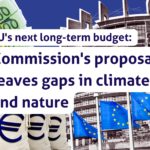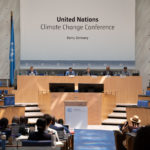The Commission is soon to make a legislative proposal to reform the EU fiscal rules in order to give more leeway and time for member states with debt above 60% of GDP to reduce their debt and deficit spending. We call upon the European Commission not to re-introduce so-called common safeguards and quantitative benchmarks that would put new useless straightjackets on Member States public spending.
However, most recent proposals from leading frugal governments suggest a new obligation for countries with a debt above 60% of their GDP to yearly reduce their debt at a uniform pace from the inception of the reformed fiscal framework. The proposal further limits how much governments are able to invest, capping national expenditures systematically below the potential growth of their economy. If integrated in the upcoming legislative initiative by the Commission, these proposals would further reduce the fiscal space for public investments, at a time where we need significant increase in public investment to achieve the just and green transition. Very similar to the existing and widely criticised debt-reduction benchmark, the proposed rule would also lead to higher pro-cyclicality, exacerbate future crises and ultimately reduce fiscal sustainability.
The proposals are a recipe for austerity for several Member States whose economies and societies were already devastated by massive cuts in public spending back in 2008-2010. Austerity has prevented governments from investing in their people and their economy, leading to economic scarring and increasing the disparities in economic performance within Europe. This left all of Europe less resilient to subsequent shocks – from the pandemic to the cost-of-living and fossil fuel price crisis. The focus on reducing public debt was ultimately counterproductive.
Significant economic divergence has already persisted since the global financial crisis, due among other to the existing EU fiscal rules, which put arbitrary limits on public spending. The recent relaxation of state aid rules will not benefit all Member States equally as some have more fiscal space than others to support their industries. Thus, divergence of economic performance between EU countries is likely to grow further.
We need all countries in the EU to be able to invest at scale in the green and just transition to ensure resilience and prosperity of our economies and societies. Reimposing unsubstantiated constraints, particularly in the face of the looming ecological and social crisis, will cause more harm than good. Arbitrary restrictions will not only affect individual countries but also have a ripple effect on the EU as a whole, given the close interdependence between our economies, not to mention our shared currency. We call on the European Commission, the European Parliament and the Council to prevent imposition of arbitrary restrictive fiscal rules which would effectively place a straightjacket on progress towards EU agreed climate, social and economic objectives.
Seven EU economic governance reforms for a stronger, greener and more resilient Europe



